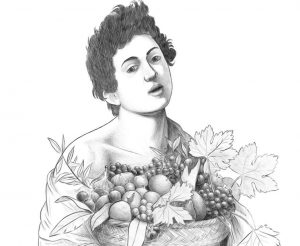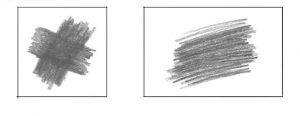Composition - Drawing tutorial - Composition - Drawing tutorial Any work of art begins with placing objects on a sheet of paper. The overall impression of a work of art depends on how the objects on the drawing are arranged. This article will be purely theoretical, where the Drawingforall.net team will tell you what the - https://htdraw.com/wp-content/uploads/2020/12/Composition.jpg - https://htdraw.com/composition-drawing-tutorial/
Composition - Drawing tutorial

Any work of art begins with placing objects on a sheet of paper. The overall impression of a work of art depends on how the objects on the drawing are arranged.
This article will be purely theoretical, where the Drawingforall.net team will tell you what the layout is. Here we will also tell you about the basic techniques of the composition and typical mistakes for beginners.
The main task of composition in art is the ability to place objects and their parts to create a single piece of art that is in a unique harmonious expression.
A composition is a system of rules and techniques for arranging elements in a work of art. The ability to place images correctly and clearly in worksheet format is a very important skill for any artist. The ability to compose works is also an art. It can also be said that composition is an artistic concept and the structure of a work of art.
The component's main goals are:
bring ideas of a picture or sketch to a viewer;
harmoniously sorts objects in a certain format.
Thanks to evolution, the human eye has the ability to see and perceive the world around it in proportion. That is, in essence, we already know how to see beauty, and we just need to learn how to turn it into a piece of paper.
While working with layouts, you need to look for them in your environment. Such abilities can be developed through various exercises. For example, you can look at different objects and compare them with each other. Represent them inside the frame, placing them in different positions of the frame.
Also, you can draw some kind of point or any other object and place it inside the frame. Or, first, depict a frame, then place an object inside it. The frame should be described in accordance with the proportions of the object you placed inside it.

Once you master these techniques, you can try to complicate the task on the "from simple to complex" principle by including two or more subjects in your composition. This helps to get the basics of composition and learn to depict more complex subjects and plots in the future. A good composition gives a picture an overall and complete look, and a bad composition can spoil even a well-created painting.

So any work of art begins with a rough estimate of the size of the objects and their position on a piece of paper. For example, we will draw a rose. We can describe it as big or small. We can also place it in the center of the sheet or shift it in any direction.
What is the ingredient
If there is only one object in the artwork, then it's not difficult to put it on paper, as in one of the examples above from Drawingforall.net's artists. But if there are two or more objects in the image, not only do you need to arrange them correctly and beautifully on a sheet of paper, but also make them look harmonious.
One of the most famous ingredients rules is the rule of thirds. The rule of thumb is to divide the worksheet into three equal parts vertically and horizontally. Objects located at intersections of lines or on lines themselves look harmonious in the drawing.
third rule in drawing
In portrait photos, you can place the head, eyes, or some other expressive part of the face on these lines and intersections. In portrait photos, you can place the head, eyes, or some other expressive part of the face on these lines and intersections. When drawing a landscape, place the horizon on one of the grid's horizontal lines.
The rule of thirds can also be used to convey movement in an image. To do this, depict a character on one of the vertical lines and leave empty space in front of him.
It should be noted that the subject does not have to be exactly located at the lines or intersections. These are only sample areas where you can position the main subjects in the artwork.
Of course, apart from the one-third rule, there are still plenty of other options for depicting the plot in artwork. For example, you can depict the main subject precisely in the center, thus centering the entire image.
So how to create a layout in drawing?
When creating layouts in drawings, you must:
1. Define your goals and objectives.
2. Examine the description and choose a point of view.
3. Determine the size of the item and place the correct paper (either vertically or horizontally).
4. Place and balance the objects on a piece of paper.
5. Determine the center of the composition.
6. Describe objects that take into account perspective and proportions.
7. Define and describe masses of objects using shadows.
8. Summarize and complete the work on the layout.
Identify your goals and objectives
Before starting work on drawings, it is necessary to define the semantic content and the goal of the future artwork. It mainly depends on your ideas and tasks that you are facing at the moment.
Check out the item description and choose a point of view
Carefully study the described topic or plot. This is necessary to understand the structure, position, and volume of what you will be depicting. If not, you run the risk of making lots of mistakes during the drawing process.
Determine the size of the item and place the correct paper (either vertically or horizontally).
The exact arrangement of the image's objects largely depends on the shape of the objects and their dimensional value. For example, if we draw a bottle upright, then it is best to choose the vertical arrangement of a sheet of paper. If we are describing a car, it is best to choose a horizontal arrangement of a sheet of paper.
Place and balance objects on a piece of paper
At this point, we need to place the item inside the paper. To best pinpoint the positions of objects in your artwork, you need to make some sketches on a separate sheet of paper. This will help you determine the most favorable angle and position of the objects. Then it is necessary to depict the edges of the object on paper. The edges of objects must not touch the edges of the sheet. Also, don't leave too much free space on the worksheet.
Determine the center of the composition
The center of the composition is the center of the main subject or group of subjects depicted on the worksheet. The visual center is the point that attracts our most attention in the drawing. The composition center may not always coincide with the visual center, it depends on the position of the main subject that other objects are grouped around, as well as the selected point of view.
Describe the audience taking into account views and rates
Earlier we outlined the edges of the objects. Now is the time to depict the common lines and build the most common forms in the artwork. In addition, we must outline the proportions of the objects and their position in space. It is important to consider subjects that are precisely spaced from each other. It is important not to make mistakes as they will be very complex to correct in the future.
Identify and describe masses of objects using shadows
To determine the masses of the objects, you should first determine the contrast of their light and shadow. Then, it is necessary to determine the nature and location of the halos. First, outline the position of the shadow. Then, with the help of the hatching process, start to fill the shadows smoothly. Then start depicting the halves, while enhancing their shadows and outlines. It is best to draw hatching lines that match the shape of the object since this method provides a good chance of achieving the volumetric shape of the object.
Summarize and complete work in composition
This is the last but no less meaningful stage in the process of composing a composition and creating a work of art. Here you need to take all the finishing steps and give the drawing a complete look. All volume, bulbs and lights should be as complete as possible.
composition in visual arts
By the way, to simplify your task when working with composition and to find it easier in the real world, you can create a special viewfinder for yourself. To do this, take a piece of paper or cardboard and cut a rectangle which corresponds to the proportions of the intended work area to be drawn. Alternatively, you can use the camera of your phone or tablet for the same purpose.
So, dear artists, be sure to subscribe to Drawingforall.net on social media so as not to miss out on new articles from our team. Also, be sure to share our articles with your friends and write us your wishes. - https://htdraw.com/wp-content/uploads/2020/12/Composition.jpg - https://htdraw.com/composition-drawing-tutorial/
Nhận xét
Đăng nhận xét